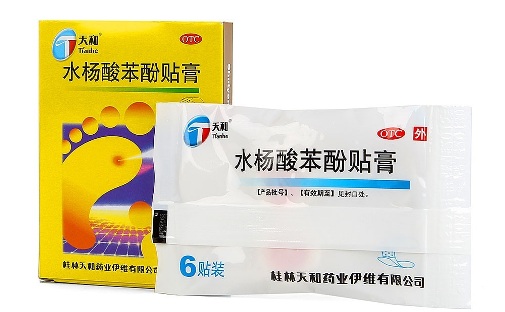The causes of calluses on the feet are usually: uncomfortable shoes, improper (for example, due to flat feet) gait, lack of vitamin A. Poor hygiene and excessive sweating of the feet contribute. Do not have time to look back - the corn is already showing off on the leg, causing a lot of unpleasant sensations when walking. And for women, this is also a cosmetic defect, which they do not want to put up with. What can you do on your own, without going to beauty salons, to remove the dead skin and regain the ease of walking?
Silicone plaster "Compid"
The most convenient method of dealing with this minor nuisance is a plaster, in particular, a compeed silicone plaster. Cope with any callus: wet, dry or a small callus that threatens to develop into a callus over time. The composition of the patch includes colloidal substances - it is they that maintain a constantly moist environment, accelerate the cleansing of the resulting wound, and also stimulate the epithelialization process that has begun. These compounds were singled out as a separate group in the 70s. last century and began to be actively used both in the food industry and in medicine. They are used in bandages for early wound healing. They impart viscosity, are resistant to various salts, and have film-forming properties. All this makes it possible to create, in direct contact with the affected skin, an ideal environment for the rapid replacement of the stratum corneum with new, healthy layers.
Using the "Compid" plaster, you protect the skin from external influences, prevent bacteria and "wrong" moisture containing dirt from entering the wound.
If you need to remove wet corn, use a patch to protect the skin from excessive pressure on the affected area. If the corn is dry, choose the type that is designed to treat dry formations. You will notice that the painful sensations went away immediately, and after a few days you will notice the result - the callus will disappear gradually and imperceptibly.

Plaster "Salipod" for dry calluses
To date, other types of anti-ash plasters have been developed, which are successfully used to treat even the most old keratinized skin areas. In particular, this is the salicylic patch "Salipod". It is only suitable for removing dry and hard formations. The main active ingredient of the patch is salicylic acid, which has an excellent softening effect. Its antimicrobial properties have been known for a long time and are used in medicine for various purposes. In addition to salicylic acid, among the active substances in the patch are present: sulfur (slightly dries), lanolin (softens), pine rosin (fights bacteria).
Apply the patch like this: after washing your feet (you can steam them slightly in hot water) and wiping them dry, cover the surface of the corn with a patch. He will not hold on himself, so it must be fixed with ordinary adhesive plaster. It should be left for 2 days, after which everything should be removed. The corn should come off by itself. Care should be taken to use the plaster for those who have diabetes mellitus, because after removing the corn, a micro-wound forms in its place, and in patients with diabetes, wounds heal poorly. However, if the doctor gives permission, you can try Salipod: the wound will be very tiny and shallow. Children are also better off not using the band-aid.

Testing a Chinese patch
Many people prefer to remove calluses with a Chinese plaster. It is available to everyone, since it is quite cheap and is available in every pharmacy. Its active ingredient is also salicylic acid. The second active ingredient is phenol. The first has an anti-fungal and antiseptic effect, the second relieves itching, irritation and pain.
How to use the patch? You will not have any difficulties: after washing your feet, stick a piece on clean skin and leave it for a day. It is advisable to steam your legs a little beforehand. Sometimes they ask if it is necessary to remove the white foam rubber circle from the plaster (it looks very unusual). No, this should not be done - you need to apply the patch in the form in which it is removed from the package. After a day of wearing, the plaster is removed and a new one is applied - and so on for several days in a row. Most often, a week is enough for the complete disappearance of the callus. The patch can only be used on dry calluses.

Plaster "Urgo" - help with dry calluses
Speaking of anti-ash products containing salicylic acid, one cannot ignore "Urgo" - another type of patch. It is also used to remove dry calluses. Its undoubted "plus" is the presence of a special protective foam pad, thanks to which healthy skin is protected from the effects of active substances. It does not work immediately - you need to stick the patch 3-4 times before bedtime to achieve the effect. If you have "old", long-hardened formations that are difficult to treat, this patch is just right.
A few words about prevention
Any disease is easier to prevent than to cure. Although calluses are not a disease, but a cosmetic defect, this statement is quite applicable to them. So, what should you do to prevent this minor nuisance from appearing? Wear comfortable shoes - ideally, they should be leather, breathable. If you have flat feet or other foot defects, see a podiatrist to prescribe special insoles. Eat foods high in vitamin A. Be sure to pay adequate attention to foot hygiene, use powders and dusters, and make oak bark baths if you sweat. If, nevertheless, you feel that you are about to rub your foot with new shoes, use a special pencil - it is applied to the places of potential formation of calluses. Did the corn appear? Buy a patch - choose one of the proposed options, and in a few days you will forget about this delicate problem.